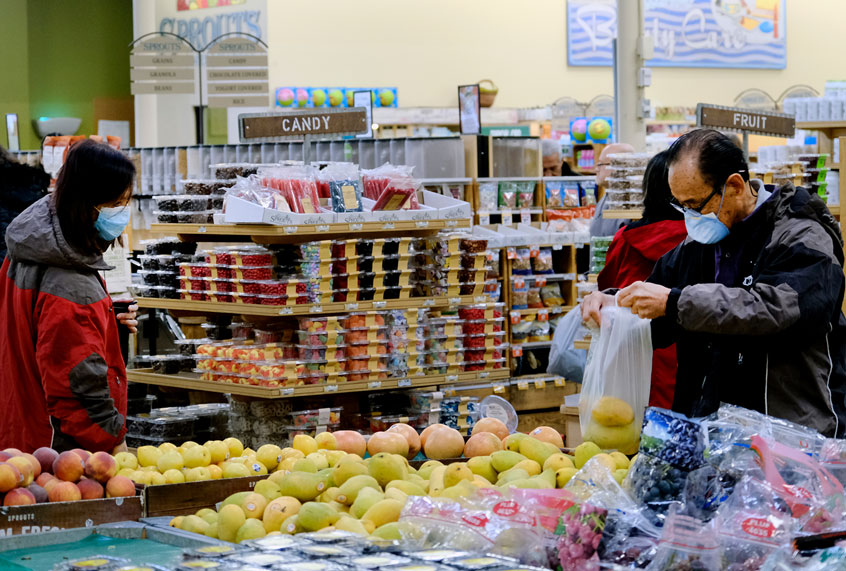The Fox News article was not ambiguous in its headline: “CDC now says coronavirus ‘does not spread easily’ via contaminated surfaces.”
While the article itself was careful to explain that the virus can still spread on contaminated surfaces, it would certainly be understandable if someone only glancing at the title — or skimming the Fox News piece rather than reading it carefully — would walk away with the wrong impression.
That is why Salon is going to clear up exactly what happened with the Centers for Disease Control (CDC) and the question of touching surfaces as a possible method of transmitting the coronavirus — namely, that you still need to be very, very careful.
At some point within the last few days, the Centers for Disease Control updated its page on how the coronavirus spreads by writing that the virus “does not spread easily” from individuals “touching surfaces or objects.” It added, “It may be possible that a person can get COVID-19 by touching a surface or object that has the virus on it and then touching their own mouth, nose, or possibly their eyes. This is not thought to be the main way the virus spreads, but we are still learning more about this virus.”
The CDC said basically the same thing in an archived version of the same page from March 28, but put its description under a headline that read “spread from contact with contaminated surfaces or objects” rather than one which declared “the virus does not spread easily in other ways.”
None of this means that you can’t contract the coronavirus through a surface. Indeed, the CDC still urges people to regularly wash their hands and disinfect surfaces that are commonly touched, as well as maintain social distancing of at least 6 feet to make sure people don’t transmit the virus by breathing, coughing or otherwise sending infected droplets through the air.
“You should still be careful,” Dr. William Haseltine — a biologist renowned for his work in confronting the HIV/AIDS epidemic, for fighting anthrax and for advancing our knowledge of the human genome — told Salon. “It means the probability might be somewhat lower, but it’s still possible. I don’t think you should change your behavior in any way. I think you should still be careful. I think you should still wash your hands. I think there is still a possibility that you could be infected by touching a surface if somebody else has touched it.”
He drew from a personal experience in his career fighting the AIDS epidemic to illustrate his point.
“I’ll give you some experience from the HIV epidemic some years ago,” Haseltine said. “The question was, how long would it stay in the blood if blood dried? People always thought, ‘No, the virus won’t last very long.’ It turned out it was a very, very long time. Why? Because exactly what it’s embedded in depends how it survives. For example, support you cough up a little bit of phlegm. Well phlegm will be dried, and will protect it. It will put a protective shell around the virus and it can last for weeks.”
Salon also spoke with Dr. Mark McKinlay, the director of the Center for Vaccine Equity at The Task Force for Global Health, which is working closely with the CDC to respond to the coronavirus pandemic.
“This new CDC guidance is clarifying that it is not as easy to become infected by the SARS-CoV-2 coronavirus from hard surfaces as it is to become infected via person-to-person contact, via respiratory droplets,” McKinlay explained. “That’s why the guidance on social distancing is so important to follow. However, it does not mean that the virus is never spread through contact with surfaces, just that it is not the predominant route of transmission.”
Dr. Georges C. Benjamin, the executive director of the American Public Health Association, expressed a similar point.
“We should remember that the evidence is that you primarily get the virus directly from another person through respiratory spread,” Benjamin told Salon. “While an infected person may contaminate a surface in a way that the disease can spread, this is not a common mode of infectious spread and the risk of infection from touching a surface is easily reduced by hand washing. The surface that was contaminated does not remain infectious for long in the real world.”
Dr. Carlos E. Rodríguez-Díaz, an associate professor at George Washington University’s Milken Institute School of Public Health, argued that Americans should look at the CDC’s revision as a chance to better understand how they can stop the virus.
“I take this revision to the guidelines as an opportunity to focus on what people can do to prevent the transmission of the virus,” Rodríguez-Díaz explained. “The focus for prevention purposes still remains; washing hands, wearing masks, and practicing physical distancing. The scientific evidence has demonstrated that the virus can live on surfaces, but the most common way of transmitting the virus is through respiratory droplets. Even when we touch surfaces exposed to the virus, it is with proper handwashing that we can stop the chain of transmission.”
He added, “The message to the public is to focus on what we can do to protect ourselves and others. The behaviors to practice and to integrate as part of our health practices are proper handwashing, wearing masks in public spaces, and physical distancing.“


